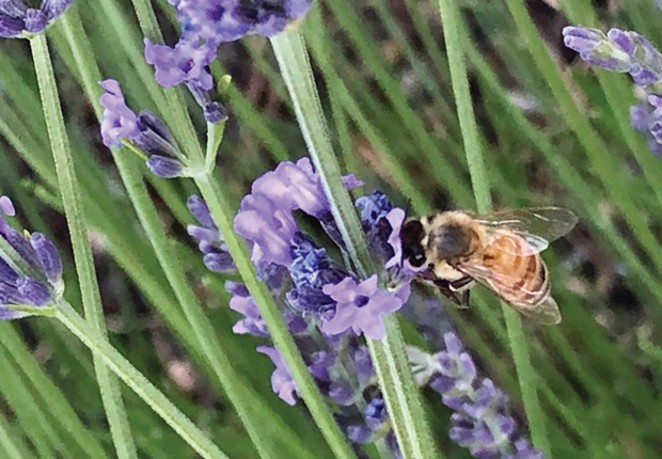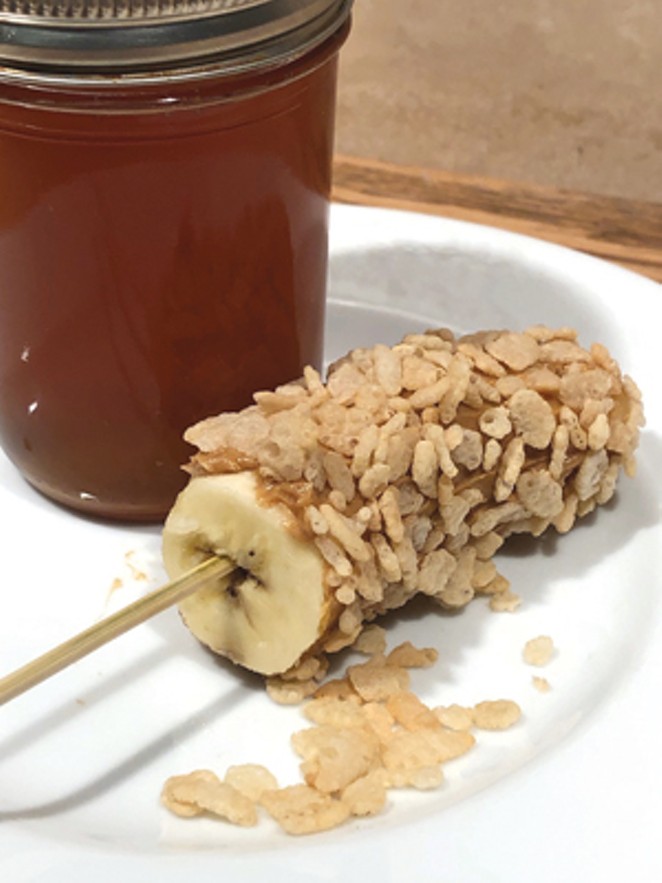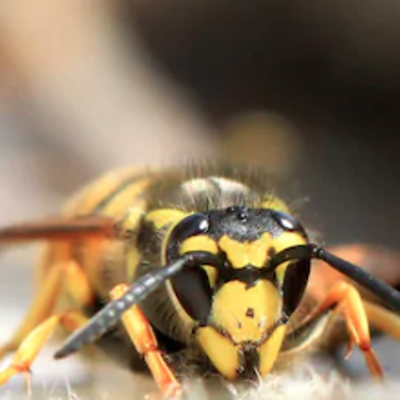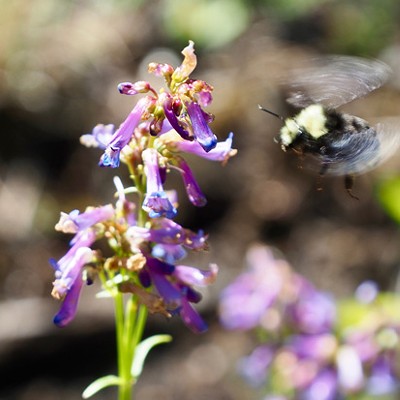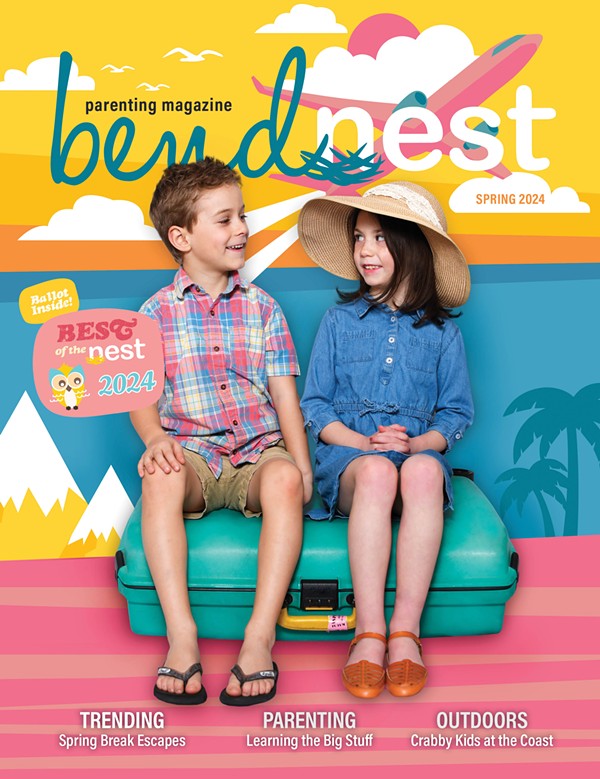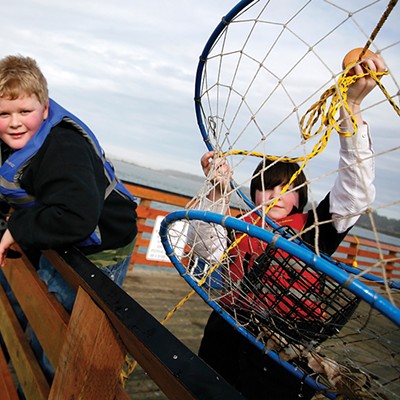The spring thaw is approaching, and Central Oregon families are dreaming about bountiful gardens and lovely lawns, with pots of blooming color and nary a weed in sight.
But what would a bee see in that yard? She'd see that perfect grass as a desert, with nothing to eat and no place to call home. These days, both honey bees and wild bees struggle to survive. They've lost habitat space and food sources, and are threatened by pesticides. Fortunately, every family can make their outdoor spaces more bee friendly.
Meet the wild bees
Honeybees get a lot of press, and rightly so! Beekeepers lose a third of their hives each year to disease and weakness from mites and pesticides. But honeybees have help from beekeepers—it's the wild, native bees most at risk.
About 4,000 species of wild bees live in North America. That includes a crazy variety of insects such as solitary ground bees, shiny green sweat bees and the lovable, lumbering bumblebees. Fun fact: bumblebees' tiny but mighty wings can vibrate 2000 times a second! Not-fun fact: a quarter of bumblebee species are at risk, and two are critically endangered.
Bees are often confused with wasps, their more aggressive cousins. Recognizing a bee is easy: most species have furry, thicker bodies. Wasps and hornets have no hair and tiny waists. Wasps like people-food, and hover around picnic plates and sweet drinks. Bees stay busy collecting pollen and nectar, so they hover around flowers and generally ignore people.
Each bee species plays an important role pollinating plants, from wildflowers to squash to alfalfa to fruit trees. It's no exaggeration that our whole food system depends on wild bees and honeybees. Just as importantly, bees are amazing creatures that fill unique spots in the ecosystem's web.
Three ways to create a bee friendly yard
1) Choose a corner of the yard to keep wild for native bee habitat
Native bees don't live in hives—they nest in holes in the ground or old trees. They like undisturbed areas with a bramble of grasses or shrubs for shade. Bumblebees especially like abandoned mouse tunnels for their nests.
2) Keep the garden blooming from spring into fall
Plant perennials that bloom at different times: Fruit trees and Oregon Grape give bees an early spring boost; lavender and sunflowers feed bees through hot summer days. Catnip and rabbitbrush stretch the foraging season well into fall. Learn more about pollinator friendly plants at the Environmental Center's happy hours in the learning garden, from 4pm-6pm every Tuesday, May through August (envirocenter.org).
3) Ditch the chemicals and use non-toxic sprays
Did we mention that dandelions and clover feed bees all season? Spraying these with herbicides causes double trouble by removing food and exposing bees to poisons. Non-toxic recipes (see sidebar) can replace herbicides and pesticides, and are safer for kids and pets, too.
Become a citizen scientist
Not all scientists work in laboratories. Many work outdoors, observing and interpreting the natural world. Kids and families can join the ranks of citizen scientists, and add to what we know about wild bees.
Start a Family Bee Journal
With just a simple notebook, a bee journal makes a fun and educational summer project. Record bee sightings, and what kind of flower she was on. Were the back legs full of pollen? How many flowers did she visit? Can you discover where she lives? Date each entry, and add sketches or photos.
Join online Citizen Science groups
Several conservation organizations collect data from people around the country. One example is Bumblebeewatch.org, where people share sightings and photos. Another is Nature's Notebook (usanpn.org) which collects information on many species, including bees.
Sweet treats: recipes with honey
Honey Banana Pops (makes 4 servings)
Ingredients:
2 bananas
4 popsicle sticks
1/2 cup peanut butter
2T honey
1 cup Crispy Rice cereal
Cut bananas in half and insert a stick in each half
Freeze for several hours
Mix peanut butter and honey in a small bowl
Spread bananas with honey mixture, then roll in cereal.
Eat right away, or freeze for later.
Honey Yogurt Fruit Dip (makes 4 servings)
Ingredients:
1 cup plain yogurt
2T honey
Sprinkle of cinnamon
2 cups berries, or fruit cut in chunks.
Stir honey into yogurt in small bowl, and sprinkle with cinnamon
Use toothpicks to dip fruit and enjoy!
Recipes for sprays
DIY Non-toxic Herbicide Recipe:
Fill a 1 liter spray bottle with distilled vinegar. Add 1/2 cup table salt, stir to dissolve, and add 1 T liquid dish soap. Generously spray unwanted plants once or twice daily, for several days.
DIY Non-toxic Pesticide Recipe:
This essential oil solution keeps away most garden pests. Spray the whole plant, including the undersides of leaves (test solution on one leaf overnight to check the concentration).
Fill a 1 liter spray bottle half way with witch hazel. Add 20 drops each of peppermint oil and neem oil. Fill with water. Shake gently before using.
Suzanne Johnson
Suzanne Johnson

